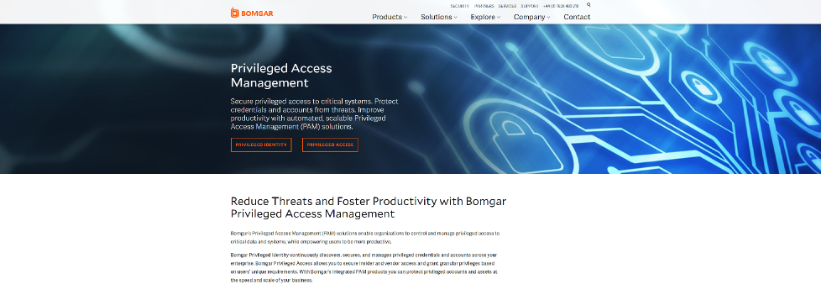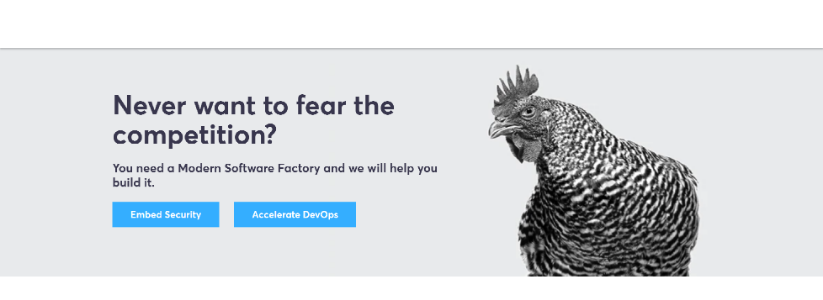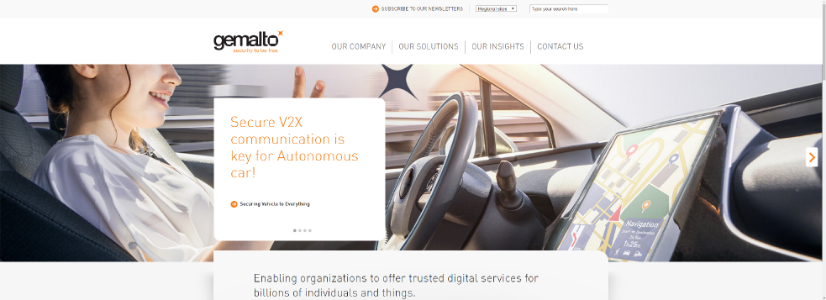With features such as a web-based console, eWorkflow, and centralized logging capabilities, your virtual environment will be an efficient, cost effective, and safe for your employees, customers, and for the business as a whole. These features allow you to reduce costs, while enforcing security policies at the drop of a hat. These security policies are also continuously updated.
Top 8 Privileged Identity and Access Management Software:
MANAGEENGINE Application Control Plus
Fortifying security with Application Control Plus (ACP), an enterprise solution for application control and endpoint privilege management.ACP provides end-to-end application security solutions to businesses through its integration of application discovery, rule-based allow-listing/block listing, removal of admin rights, and management of application-specific privileges.
ACP acts as a software discovery tool, which can identify and categorize products and software according to filters such as vendor, digital signature, product names, and host devices, ensuring that the management process is as quick and organized as possible.
A Zero-trust application environment can be created with the use of rules-based allow listing and block listing which can validate every access request. In addition to reducing the attack surface by allowing only trusted apps, ACP also provides global child process control that ensures restrictions are maintained even at the granular level, thereby reducing the likelihood of malware and zero-day threats.
With ACP, any business, regardless of its size or mode of operation, can manage machines across local and remote offices, in addition to roaming users, all from a single console.

MANAGEENGINE Application Control Plus
BEYONDTRUST Privileged account management and vulnerability management
Privileged account management and vulnerability management solutions that deliver visibility to reduce risks + control to act against data breach threats.

BEYONDTRUST
THYCOTIC full-featured privileged access management
The most full-featured privileged access management solution available is easy to use, well adopted and affordable. Start your free 30-day trial here.

THYCOTIC
BOMGAR Secure privileged access to critical systems
Secure privileged access to critical systems. Protect credentials and accounts from threats. Improve productivity with automated, scalable Privileged Access Management (PAM) solutions.

BOMGAR
CA Privileged Access Management
Privileged Access Management solutions from CA Technologies help organizations control, monitor and audit privileged accounts.

CA
OKTA identity management and single sign-on to any application
Provide secure identity management and single sign-on to any application, whether in the cloud, on-premises or on a mobile device for your employees, partners and customers with Okta.

OKTA
FUJITSU Identity as a Service (IDaaS) and Privilege Access Management
Fujitsu’s Identity as a Service (IDaaS) and Privilege Access Management (PAM) solutions ensure the right people reach the right information, compliantly and safely.

FUJITSU
OSIRIUM privileged access management
Osirium’s PxM Platform provides complete end-to-end privileged access management protection across your entire IT estate, whatever your requirements.

OSIRIUM
SAVIYNT Access Governance & Intelligence
Next Generation Access Governance & Intelligence for Cloud, Big Data & Enterprise Applications to address security, compliance and regulatory challenges.

SAVIYNT
ONEIDENTITY Identity Governance, Access Management, and Privileged Management Solutions
We are One Identity: Identity Governance, Access Management, and Privileged Management Solutions for the Real World. Trusted by Leading Brands.

ONEIDENTITY
CENTRIFY privileged access management
Centrify privileged access management (PAM) products secures access to privileged systems. Click for a FREE Trial of our PAM security products!

CENTRIFY
NETIQ (IAM) identity and access management
Netiq (IAM) identity and access management solutions provide identity management and access management to provide simple, secure access for the right people at the right time.

NETIQ
GEMALTO identity and access management (IAM)
Gemalto’s identity and access management (IAM) solutions allow organizations to meet the evolving needs around cloud applications and mobile devices by enabling secure access to online resources and protecting the digital interactions of employees, partners, and customers with market-leading strong authentication and digital signing pr oducts.

GEMALTO
***
The Different Types of Misuse of Privileges
For companies, the misuse of privileges by their employees (or anyone that, at any point in time, has access to certain information, computers or servers) can prove to be very costly. Even the most highly protected company with layers of security precautions can become instantly vulnerable if privileges are misused. For many networks and companies, the weakest aspect of their security system is the people who use it.
That said, there are different ways to misuse privileges. It can be as simple as an operator error exposing e-mail addresses or personal phone numbers. This would be an example of an accidental misuse of privileges. There are also intentional and indirect misuses of privileges, and the severity can vary between all three, depending on how much information is compromised and how compound the problem becomes. The two types found the most are accidental and intentional misuse of privileges, and they are explained in more detail below.
Accidental Misuse of Privileges
As mentioned above, an accidental misuse of privileges can be as simple as an error that shows all of the recipients of a certain e-mail message. This may not be an issue at all, but it can become a serious one depending on who obtains that information. Also, if auto-generated messages start replying to the e-mail, additional information might be shared. Another example of accidental misuse could be simply a user temporarily saving important information on his or her desktop. The desktop is often the most vulnerable place to save things on a computer, leaving that information in danger as long as it is there. Indirect misuse of privileges can sometimes fall into this category as well.
Intentional Misuse of Privileges
Intentional privilege misuse is often done by hackers, thieves, outside contractors, or even disgruntled or recently dismissed employees. These are often the most severe types of security breaches because they were done intentionally and with a purpose in mind. To prevent against inside threats, the principle of least privilege is the first line of defense. This limits the different users on your network to only the information they absolutely need to have. If your employees or the various contractors or potential hackers cannot access information, they cannot steal it and profit from it. Along these lines, using a Password Vault Software is valuable as well, storing valuable information behind protected layers of security.
Developing Strategies for a Privileged Identity Management Program
With the current threats of security breaches for enterprises both large and small, it is now more important than ever to implement a comprehensive privileged identity management (PIM) program. While such a program is no small task, especially for larger companies, developing short and long-range strategies will set up a sound guideline that will allow more important security measures to take precedence. A focused plan will make the process flow more smoothly, which will cut down on time and effort.
One mistake that is common among companies hoping to remedy a particular security problem, such as an intentional or inadvertent data breach or an audit failure, is that they will install a PIM product that addresses only their limited objective. With the advanced malicious technology now readily available and in use, it is vital for a company’s stability to implement privileged identity management software that is more comprehensive in scope. There is currently advanced virtual machine security software that will serve these important security needs.
Such sophisticated software will help implement the principle of least privilege in which users, for instance, are only given access to those applications that directly relate to their work at hand. This greatly reduces the risk of wide scale malicious software damage, for example.
Software that takes a global approach to defeating security threats will be far more effective than those covering only certain aspects of security issues. This big picture approach should also be applied to your company’s strategy to implement a privileged identity management policy.
Begin by prioritizing which users and applications could create the greatest security breaches, whether intentional or not. The more open doors that there are in your system, the more avenues there are for malicious software to enter and wreak havoc upon the network. Taking on a phased approach to security management will help implement the most important safety measures first reducing the greatest risks up front. By implementing the program in this way, a solid course for the rest of the security plan will have been set making the overall process flow a whole lot smoother.
A well planned, phased security management strategy will also help you meet audit standards. Your company will be able to demonstrate that it has a strategy in place that will create a detailed audit trail. You will also be able to show that a distinct schedule is in place to solve any current security inadequacies.
Privileged Identity Management is a Necessity Today
Identity theft is something that you are likely to hear about on the evening news and in your local paper. It happens all the time. However, many companies don’t realize that identity theft and the hijacking of their computer systems can happen as well.
Privileged identity management software is a way to combat this problem, but you need to make sure that you use it properly. You need to make sure that you have a tight security system and limit the number of users who have full access to the system. If you don’t take these steps, your company is still at a high risk.
Without privileged identity management for your company, you are putting your business and your client and employee information in harm’s way. Over the past several years, foreign and domestic hackers have been finding ways to infiltrate companies and take the identities of employees. They aren’t necessarily taking over the identities in the traditional sense. However, it allows them access to your computer systems, and within those systems is all of your company’s sensitive information.
A hacker who has found a way into your system can find any number of ways to exploit your company. They can find out information about your clients, and they can find trade secrets. They can discover financial information about your company. A determined hacker can literally destroy everything that you’ve worked so hard for over the years.
If your clients discover that your system – and their data – was compromised, you can imagine how upset they are going to be. Even if the hacker wasn’t able to retrieve any data, those clients are not going to feel as comfortable doing business with you. Whether your company is large or small, you need to make sure that you take the proper steps to ensure privileged identity management for everyone on the system.
Choose a great software solution that helps you to eliminate shared passwords. This can help you to reduce misuse of the system, and it is easy to monitor so that your IT team will be able to keep track and audit the system. This provides a safe and simple way for IT to do their job without having to worry about other users finding ways around the system.
A secure system is great. You won’t have to worry about what might happen because you have the barriers in place to stop those threats. That means you will be able to get on to the business of running your company!
The Risks for Privileged Identity Management
One of the most important duties of information technology staff is privileged identity management: ensuring that the users who need to have deep systems access, and users who do not need that access do not have it. Privileged identity management is one way to help keep your information network secure and maintain safe information practices.
However, privileged identity management itself is not infallible and there are always unscrupulous persons who are out to take advantage of your business by breaching your security. There are a number of risks that you need to take into account when constructing your system and putting security practices into place.
Untrained Users
It is not enough to set your staff loose in an information environment, even if your privileged identity management system is airtight. An intruder without a password can still enter your system under false credentials if staff members walk away from their terminals while they are logged in! Teaching your staff good information security procedures is a key part of the security process.
In order to safeguard against user error, users should be educated in safe practices such as the use of secure passwords, unique passwords, and taking care to log out when they leave their terminals so that unauthorized access does not take place. Having alert and well-educated staff who perform security protocols regularly can be invaluable in protecting your information network. They are your first and most important line of defense.
Malware
Careless users or malicious intruders can also cause breaches of your system by introducing malware. Malware is any intrusive software introduced into a system by an unauthorized person in order to perform tasks they are not normally permitted to do.
The best solution to avoid malware intrusions is to use a completely sealed information system; no outside information enters in any format. However, this is not feasible for most businesses and is highly inefficient for nearly all. A less drastic alternative is to implement strong security standards among staff and deploy a least privilege access policy in your information systems to help contain security breaches. If it is managed properly, this will provide a significant obstacle to malware attacks and help protect your system.
How the Least Privilege Concept Works
Whatever the size of your business, there is a good chance that you could benefit from the implementation of a least privilege policy. This is the fastest and easiest way to protect all of your computer networks and data. When you implement a least privilege policy, you are essentially giving specific employees the ability to access certain information at any given time. If it is your wish, you can deny access to all employees, or you could leave most of your programs and information available to everyone. The choice is certainly yours, as you can use password protection software to create a hierarchy of power within your organization.
When you assign permissions, you can completely customize the requests. Many IT departments will leave interns and assistants unable to access the most important information in the company, while still giving access to the programs and software that are needed to perform their jobs. Managers may then have access to the sensitive materials that are needed on a daily basis, while other data is still kept secure. In addition to the security of data, you can ensure than none of your employees are able to access particular Internet sites that could introduce malicious programs to your network.
Deciding to implement a least privilege policy can be a tough decision for quite a few reasons. First of all, many business owners don’t want to believe that their employees would willingly cause damage to the organization. They feel that putting together security measures implies a lack of trust. In addition to that, there is also the cost involved in password protection software, which can be quite steep.
Just remember that, with virtual environments, your employees are no longer the only people who can access your information from anywhere at any time. By putting a least privilege policy in place, you can ensure that no outsiders gain access to sensitive information. You can also keep your employees from visiting those websites and accidentally introducing viruses into your networks. The cost of cleaning up after data theft or a virus introduction is often much higher than the cost of software that would have prevented the breaches in the first place. You will notice after implementing the new security policies that productivity also improves, which will help you to recover the cost of the software in no time at all. There really is no better way to improve the way that you do business.
Protecting Your Employees
Often times it can be difficult for an employer to know what they should and shouldn’t be doing when it comes to computers. Their first instinct will always most likely to be to put their trust in their employees, that putting any kind of limitations on their computers would be insulting to them. While it is good that the employer cares enough about their employees to want to treat them with respect, sometimes it can do more harm then good.
Most big corporations are going to have all of their computers linked up with one main server, usually through the use of virtual machines which allow a series of guest computers to use the resources provided by the main server. Virtual machines have become a huge asset in the business world because of how easily they allow companies to cut down the costs that would otherwise have to go into the never ending stream of software updates. While they still need to update, they just need to focus solely on the main server and the occasional virtual machine update. Still, this is much more preferable then having to pay for dozens of different updates for each individual computer.
Read More: Top 5 Best Virtualization Solutions for Small Businesses
In order for virtual machines to properly work though the server needs to be properly maintained. Some computers are going to need to take a higher priority then others depending on what level of tasks they are being required to perform. Obviously you can’t have one person sucking up all of the server’s memory on compiling a word document. The great thing about virtual machines is it that is incredibly easy to customize the settings allowing you to get the optimal performance levels out of each computer. It also cuts down on how much you have to spend on tech support because instead of having to worry about dozens, if not hundreds of computers there’s really just the one main server that needs to be prioritized.
There is nothing wrong with making sure that the guest computers have the least privilege possible. It isn’t done to limit them, but merely to protect their computers and ensure that nothing bad happens.
The Importance Of Passwords
In the business world virtual machines have been a huge asset in helping companies save money when it comes to how much they have to spend every year to keep all of their various computer systems up to date with the latest in software upgrades. When you think about upgrading software on an individual basis the costs really aren’t too bad. Sure, there are plenty of upgrades that come out every year, but most of them are pretty cheap, few even going above the fifty dollar mark. That’s on an individual basis though, something as cheap as a five dollar software upgrade can easily become a thousand dollar investment for the company depending on just how many computers they will need to apply it for.
That is where virtual machines come in though. Virtual machines will still require software to run, but only the most basic so that the computer can actually be turned into a virtual machine, meaning you really just have the one program to worry about upgrading instead of multiple ones. All of the virtual machines will be linked up to one main host server that will in turn provide each of the guest machines with the necessary software to run whatever tasks you want them to be able to. Virtual machines are great because they allow you to easily configure the settings that you want for each of the guest computers, ensuring that you don’t waste memory on computers that are only needed to perform the most basic of tasks compared to someone who might be doing work to the company website or preparing an important presentation.
The most common concern when companies are debating making the switch over to virtual machines is what happens if someone does something that damages or outright shuts down the main server that all of the guest computers are linked up to. One of the first things that you’ll need to do if you’re planning on making over the switch to virtual machines is making sure that all of the guest computers are given the least privilege options possible. This might seem restrictive at first, but really it is just designed to prevent any harm from befalling the main server. Using password vault software is a good idea as well as it makes it even harder for any of the guest computers to accidentally stumble upon some of the more delicate settings that need to remain unchanged for the server to run.